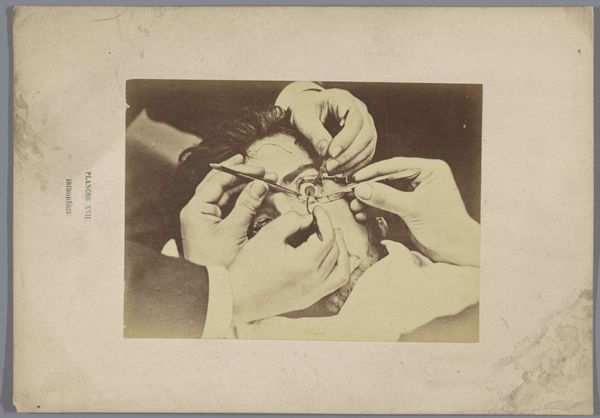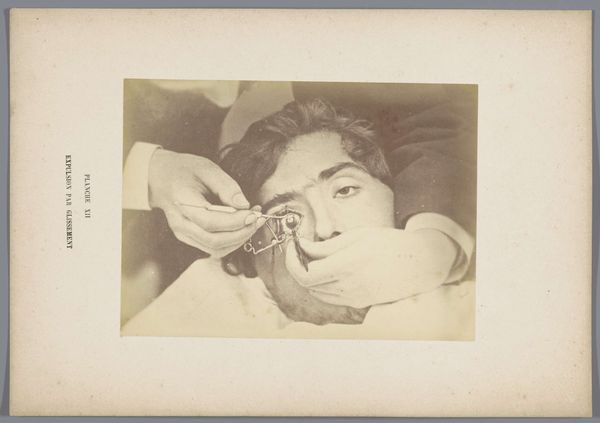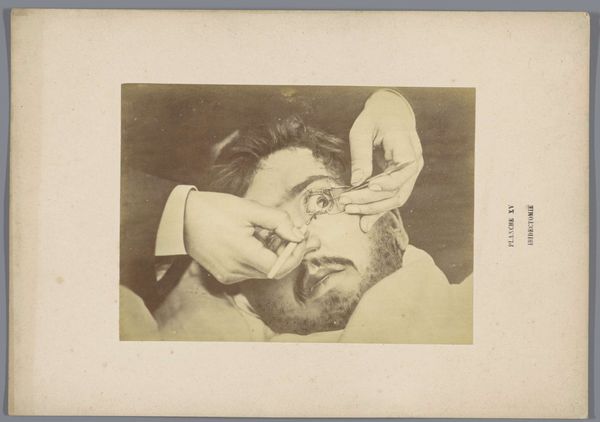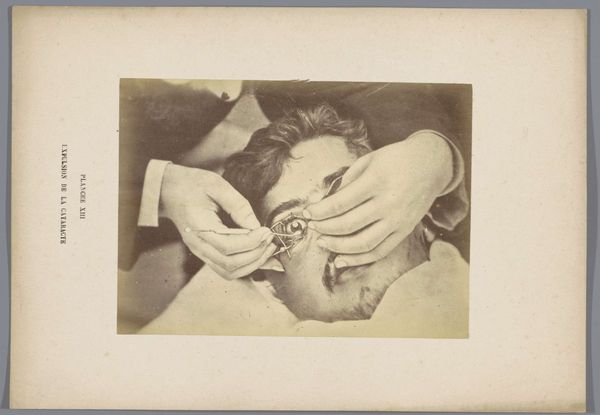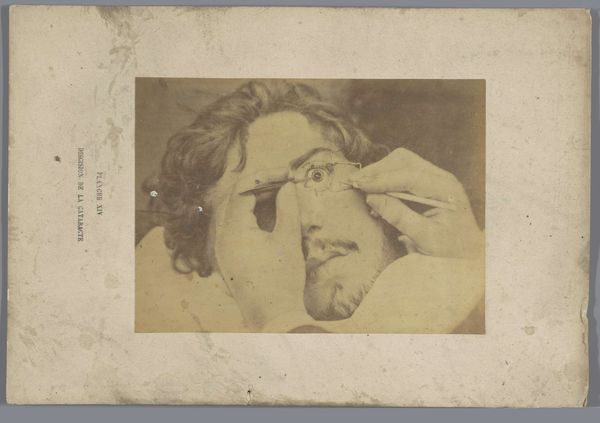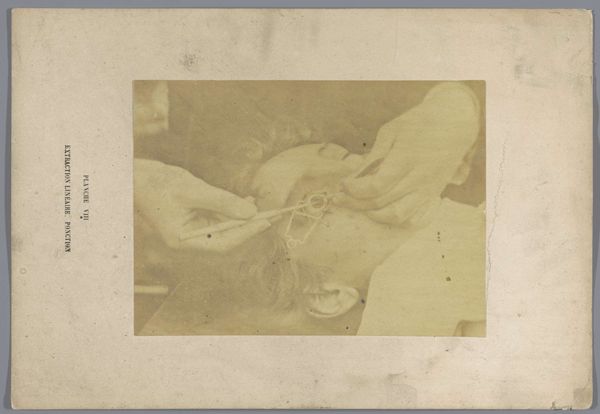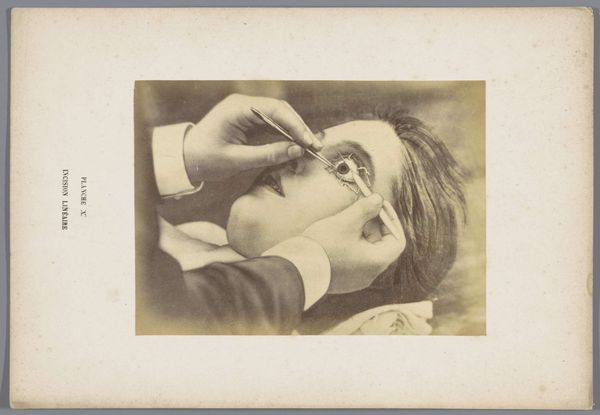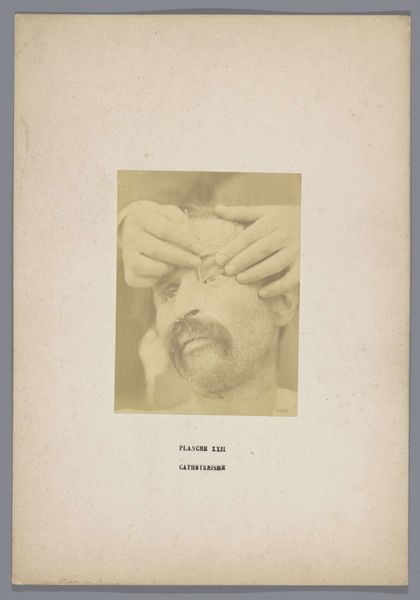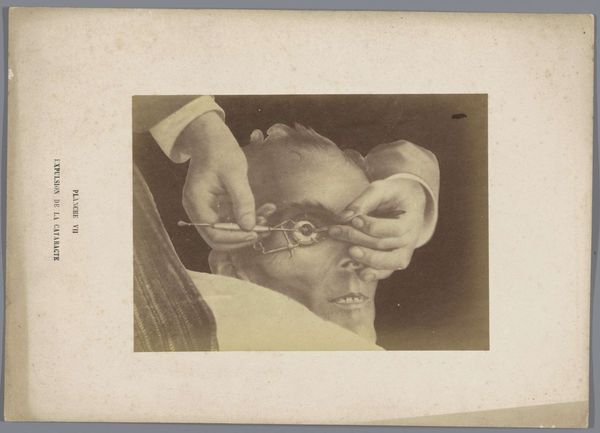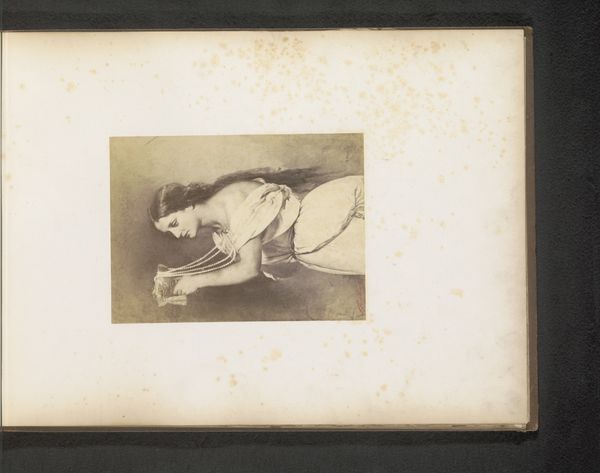
photography, gelatin-silver-print
#
portrait
#
photography
#
gelatin-silver-print
Dimensions: height 126 mm, width 174 mm
Copyright: Rijks Museum: Open Domain
Editor: So, this photograph is entitled “Verwijderen van een deel van de iris tijdens een oogoperatie,” or “Removal of part of the iris during eye surgery,” and it's credited to A. de Montméja before 1873. It’s a gelatin silver print and definitely makes you look twice. What’s your take on its historical significance? Curator: Well, let’s think about the context. This photograph, likely intended for a medical audience, is a powerful demonstration of the rise of scientific positivism. We see the human body treated as an object of study and intervention. Photography, a relatively new technology at the time, was being deployed to document and disseminate medical knowledge, influencing surgical practices. Editor: It's so different from how we usually see photography used. The staging, I guess, is for scientific use rather than, say, art. Curator: Exactly. Consider the power dynamics at play. The patient's face is exposed, arguably vulnerable, in service of medical advancement. What does that say about the role of the patient in these early medical narratives? Is it meant for public education, or strictly to inform other doctors? Editor: I guess I hadn’t thought about that… it brings up some complex questions about medical ethics and the public perception of these practices, doesn't it? The open exposure here of the iris seems very dangerous given germ theory and antiseptic principles weren't totally ubiquitous back then. Curator: Precisely. These images reflect—and perhaps reinforced—a sense of professional authority, helping shape perceptions of doctors within society, which has been a powerful cultural theme. What do you find most compelling about this piece now that we've talked? Editor: It’s incredible how a single image can reveal so much about the relationship between medicine, technology, and social values of the time. I hadn't initially thought about it that way. Curator: Right, and photographs like these also influenced how medical knowledge was shared and legitimized in an era where photography was becoming increasingly important in scientific disciplines. The very act of documentation shaped the future of medicine.
Comments
No comments
Be the first to comment and join the conversation on the ultimate creative platform.
